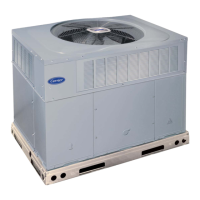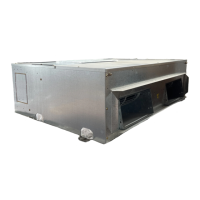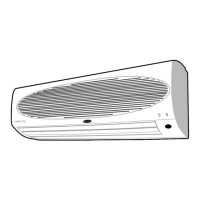N4A4, N4A5S: Installation Instructions
Manufacturer reserves the right to change, at any time, specifications and designs without notice and without obligations.
2
A07588
Fig. 1 – Piping Installation
Installation
IMPORTANT: Effective January 1, 2015, all split system and packaged
air conditioners must be installed pursuant to applicable regional
efficiency standards issued by the Department of Energy.
Check Equipment and Job Site
UNPACK UNIT
Move to final location. Remove carton taking care not to damage unit.
Inspect Equipment
File claim with shipping company prior to installation if shipment is
damaged or incomplete. Locate unit rating plate on unit corner panel. It
contains information needed to properly install unit. Check rating plate
to be sure unit matches job specifications.
Install on a Solid, Level Mounting Pad
If conditions or local codes require the unit be attached to pad, tie down
bolts should be used and fastened through knockouts provided in unit
base pan. Refer to unit mounting pattern in Fig. 2 to determine base pan
size and knockout hole location.
For hurricane tie downs, contact local distributor for details and PE
(Professional Engineer) certification, if required.
A05177
Fig. 2 – Tiedown Knockout Locations
On rooftop applications, mount on level platform or frame. Place unit
above a load-bearing wall and isolate unit and tubing set from structure.
Arrange supporting members to adequately support unit and minimize
transmission of vibration to building. Consult local codes governing
rooftop applications.
Roof mounted units exposed to winds may require wind baffles. Consult
the Application Guideline and Service Manual - Residential Split
System Air Conditioners and Heat Pumps for wind baffle construction.
NOTE: Unit must be level to within ±2° (±3/8 in./ft.±9.5 mm/m) per
compressor manufacturer specifications.
Clearance Requirements
When installing, allow sufficient space for airflow clearance, wiring,
refrigerant piping, and service. Allow 24 in. (610 mm) clearance to
service end of unit and 48 in. (1219 mm) (above unit. For proper airflow,
a 6-in. (152 mm) clearance on 1 side of unit and 12-in. (305 mm) on all
remaining sides must be maintained. Maintain a distance of 24 in. (610
mm) between units or 18 in. (457 mm) if no overhang within 12 ft. (3.67
m) Position so water, snow, or ice from roof or eaves cannot fall directly
on unit.
NOTE: 18” (457 mm) clearance option described above is approved for
outdoor units with wire grille coil guard only. Units with louver panels
require 24” (610 mm) between units.
On rooftop applications, locate unit at least 6 in. (152 mm) above roof
surface.
Operating Ambient
The minimum outdoor operating ambient in cooling mode without
accessory is 55°F (13°C).
Make Piping Connections
CAUTION
!
CUT HAZARD
Failure to follow this caution may result in personal injury.
Sheet metal parts may have sharp edges or burrs. Use care and wear
appropriate protective clothing and gloves when handling parts.
INSULATION
SUCTION TUBE
LIQUID TUBE
OUTDOOR WALL INDOOR WALL
LIQUID TUBE
SUCTION TUBE
INSULATION
CAULK
HANGER STRAP
(AROUND SUCTION
TUBE ONLY)
JOIST
1” (25.4 mm)
MIN
THROUGH THE WALL
SUSPENSION
UNIT BASE PAN
Dimension in. (mm)
TIEDOWN KNOCKOUT LOCATIONS in. (mm)
A B C
23-1/2 X 23-1/2
(596.9 X 596.9)
7-13/16 (198.4) 4–7/16 (112.7) 18–1/16 (458.8)
26 X 26
(660.4 X 660.4)
9–1/8 (231.8) 4–7/16 (112.7) 21–1/4 (539.8)
31–1/2 X 31–1/2
(800.1 X 800.1)
9–1/8 (231.8) 6–9/16 (166.7) 24–11/16 (627.1)
35 X 35
(889 X 889)
9–1/8 (231.8) 6–9/16 (166.7) 28–7/16 (722.3)
WARNING
!
PERSONAL INJURY AND ENVIRONMENTAL
HAZARD
Failure to follow this warning could result in personal injury or death.
Relieve pressure and recover all refrigerant before system repair or
final unit disposal. Use all service ports and open all flow-control
devices, including solenoid valves.
Federal regulations require that refrigerant is not vented into the
atmosphere. Recover during system repair or final unit disposal.

